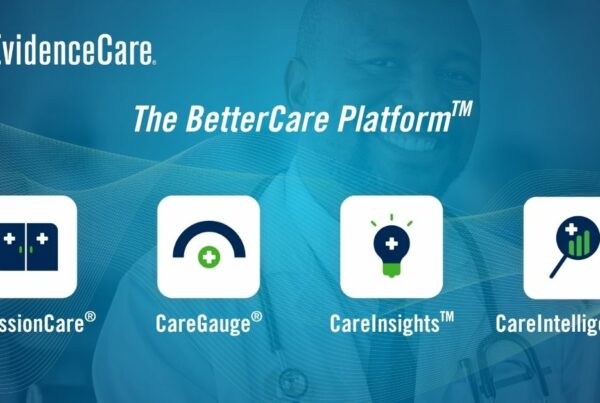In our efforts to empower hospital clinicians to provide better care by having real-time transparency to cost and benchmark utilization data, we’ve learned that one of the core code systems that defines modern hospital resource management – Diagnosis-Related Groups (DRG) – is misunderstood or even unknown.
While CFOs and Revenue Cycle leaders are often familiar with DRGs, there is a gap between frontline clinicians as to how this impacts finances and patient care.
Let’s take a high-level tour of the DRG code system. How did it come to be? How is it used? What significance does it have for clinicians and systems who want to improve care and be good stewards of resources along the way?
What is a DRG?
Each DRG code represents a group of clinical diagnoses. It’s meant to group conditions a hospital might encounter by body part, severity, and resource usage. There are only about 800 DRGs, compared to 70k or so ICD-10 codes. This means the grouping must encompass quite a bit of complexity.
First, the codes are divided into two categories – medical and surgical. And then, into 25 categories of organ system/body part. And lastly into small families of two or three.
These families are made of a base or primary condition, and then adjacent codes that include other diagnoses as either CCs (complications and comorbidities) or MCCs (major complications and comorbidities).
Here’s an example:
DRG 293: Heart Failure and Shock
DRG 292: Heart Failure and Shock With CC
DRG 291: Heart Failure and Shock With MCC
And here are two examples of how additional diagnoses can determine the code:
If the patient also has cystic fibrosis, that changes the DRG from 293 to 292 as it’s a CC.
If the patient also has pneumonia, that changes the DRG from 293 to 291 as that’s an MCC.
Note: CMS documents how each ICD-10 code can be either a CC or MCC here.
The origin of the DRG code system
Until the early 1980s, hospitals were reimbursed retroactively by CMS. They would submit their charges post-discharge and be reimbursed. Under a retrospective payment scheme, inflation of healthcare cost was extremely high, and systems lacked an incentive to manage resources efficiently. Something had to change.
Simultaneously, a research project was underway at Yale University. Bob Fetter and John Thompson were attempting to define a hospital ‘product’ in order to manage and control cost-per-case. They joined forces with physicians to bridge the research into the real world.
The team took 10,000 ICD9-CM codes and grouped them into 25 MDCs (Major Diagnostic Categories) that corresponded to body systems. They found that age, procedures performed, and additional diagnoses had significant impact on resource usage and began to organize a smaller code set around these factors.
The first real world use of DRGs was in New Jersey. The state’s costs were skyrocketing, and Dr. Joanne Finley, the state’s health commissioner, negotiated an all-state prospective payment experiment based on the new code system. The hospitals would assign each patient a DRG and be paid a fixed amount for the care provided.
The experiment was a success, and soon was legislated as the new reimbursement methodology for inpatient stays by a combination of two laws: the Tax Equity and Fiscal Responsibility Act of 1982 and the Social Security Amendments of 1983.
The impact of DRGs on hospital management
CMS uses DRGs as a price-setting mechanism, so they’re vital to a hospital’s financial health.
A few components are worth understanding before we look at an example.
-
- Base payment rate. This is a single rate per hospitalization that considers the fixed costs, location-adjusted labor costs, and more. It varies by facility.
- Relative weight. Each DRG is evaluated annually to set the relative weight. It represents the resources needed to care for the condition, including additional complications. This is where Case Mix Index comes in as an important metric for hospital executives to know and understand.
- Geometric Mean Length of Stay (GMLOS) is how CMS estimates how long the patient will be in the hospital for a given DRG.
Here are two examples for a hospital with a base payment rate of $7,000.
DRG 005: Liver Transplant w/MCC has a relative weight of 11.4
The hospital reimbursement will be: $7,000 * 11.407 = $79,849.00
DRG 090: Concussion w/out CC/MCC has a relative weight of 0.8321
The hospital reimbursement will be: $7,000 * .8231 = $5,761.7
Because DRGs are the foundation for Medicare and Medicaid reimbursement, understanding DRGs allows hospitals to predict revenue streams and allocate resources accordingly.
While many doctors naturally believe their patients require the highest level of care, DRGs provide an objective assessment. This is why Clinical Documentation Improvement (CDI) is so important to ensure documentation accurately reflects a patient’s Severity of Illness (SOI). Documentation is crucial for assigning the correct DRG and, consequently, a realistic SOI score.
By analyzing DRG data, hospitals can identify areas where they might be over- or under-utilizing resources for specific patient types. This can lead to more efficient use of staff, equipment, and beds.
Hospitals can compare their DRG mix and associated costs with industry benchmarks to identify areas for improvement. This can involve optimizing care plans for specific DRGs, which can lead to reduced lengths of stay and improved quality of care.
Companies like 3M and Iodine provide software to assist hospital teams to get a working DRG as soon as possible, which helps coders assign the correct codes to diagnoses and procedures and ultimately influences DRG assignment. Getting a working DRG quickly helps provide a target discharge date and impacts average length of stay.
What role does a patient’s DRG play in CareGauge?
Given how important this is to a hospital’s operational and clinical leadership, EvidenceCare built CareGauge around the same code set.
We ingest cost and care data from a hospital’s “baseline” period, which is usually a 12-month timeline. Our patented analytics engine creates a benchmark data set for each DRG. Specifically, how much does it typically cost – broken down by revenue code bucket, how long patients usually stay in the hospital, etc. This is the foundation for our real-time dashboard display in the medical record.
Early in the stay – sometimes within minutes of the admission – we assign a “working DRG” to the encounter. We continuously monitor the patient’s clinical condition to update it as the stay progresses. To create insights into utilization and how it compares to the baseline period for that condition, we take every order and assign an estimated cost to it. Each image, medication, procedure, night in a room, etc.
This real-time connection to clinical decision-making allows us to show a relevant status to the clinician right in their workflow. Is this patient’s utilization efficient? Or going above the baseline?
We don’t make or direct clinical decisions, but CareGauge data can help shape clinicians’ understanding of the relative utilization and cost of their care decisions in a new way.
If you’re a hospital leader interested in learning more about CareGauge, visit our product page or schedule a customized demo today!










